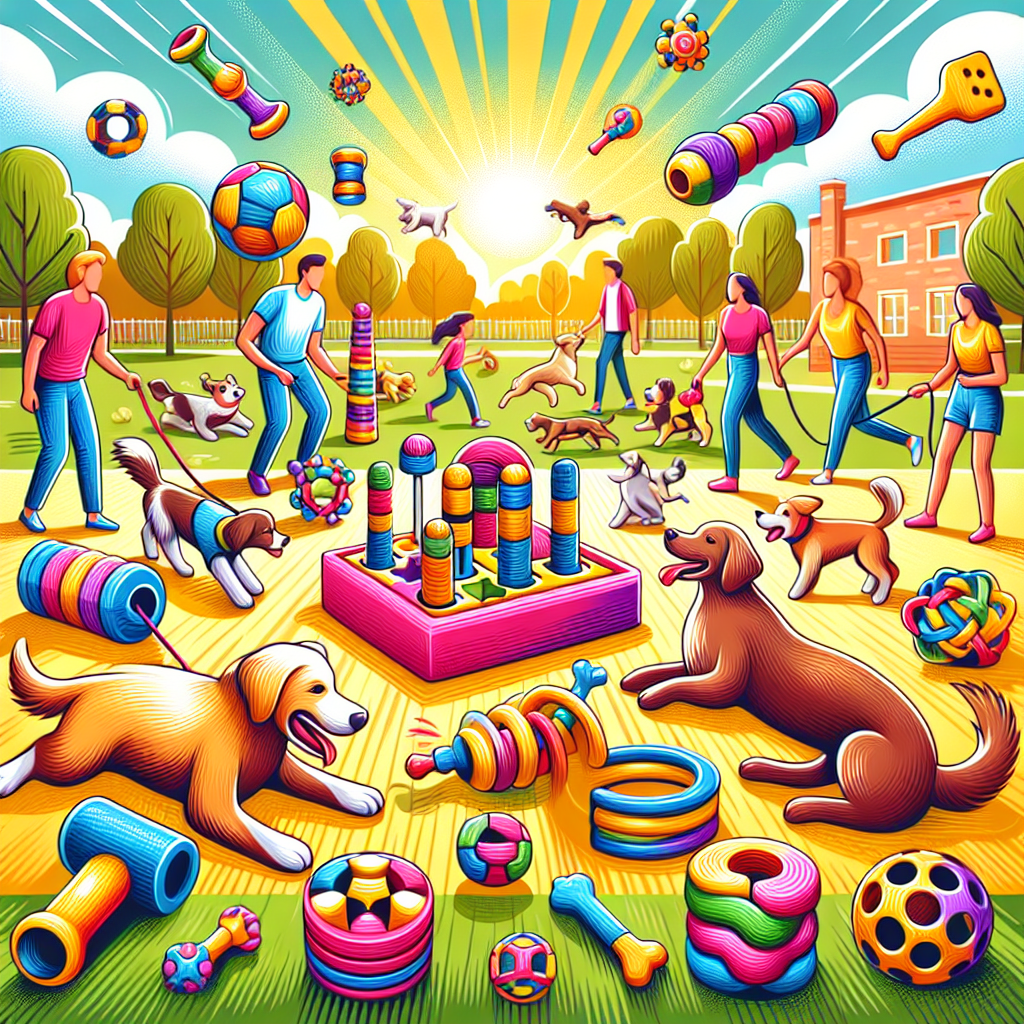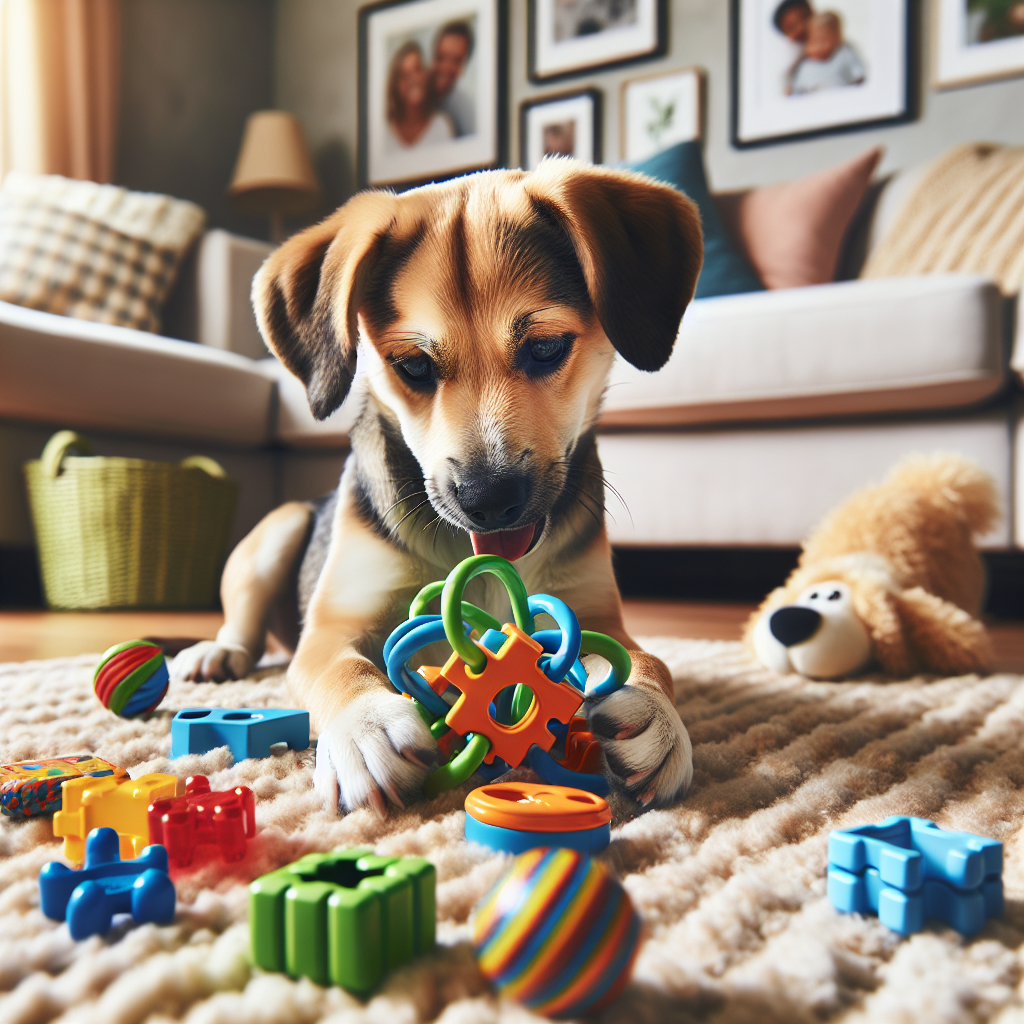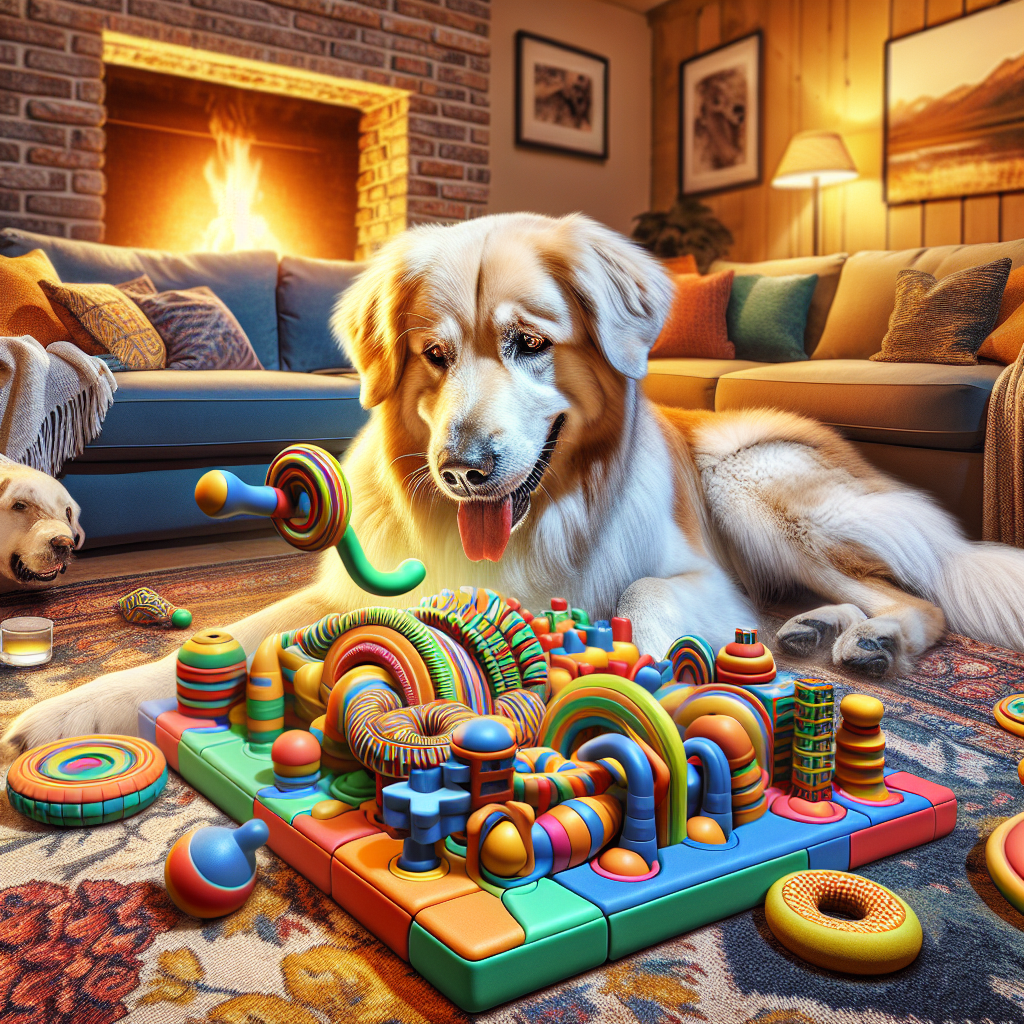
The article from The Beagle Babies blog offers a curated list of the top 10 best dog puzzle toys for 2024, emphasizing their importance for mental stimulation in dogs. Puzzle toys help combat boredom, anxiety, and behavioral issues by providing a fun and challenging way for dogs to engage their brains. The top picks include Outward Hound Hide-A-Squirrel, Trixie Pet Products Flip Board, Nina Ottosson Dog Tornado Puzzle Toy, Kong Classic Dog Toy, Pet Zone IQ Treat Ball, Ethical Pet Seek-A-Treat Shuffle Bone, ZippyPaws Burrow Squeaky Hide and Seek Toy, Starmark Treat Dispensing Puzzle Ball, Busy Buddy Twist ‘n Treat, and Snuffle Mat. The blog also provides insights into choosing the right puzzle toy based on your dog’s size, chewing habits, and skill level, noting that Watson and Linda, the blog’s beagle mascots, have their own favorites among the listed options. For a more detailed look at each toy and tips on how to keep your dog entertained and mentally stimulated, read the full article.

Dog anxiety, similar to human anxiety, can manifest through behaviors like excessive barking, destructive actions, and restlessness. Understanding these signs can help owners address their pets’ anxiety effectively. Puzzle toys, which are essentially brain games designed to challenge and engage dogs, can be a solution to alleviate anxiety. Common examples include treat-dispensing balls, interactive puzzle boards, and snuffle mats. These toys work by providing mental stimulation and engaging a dog’s mind, thus distracting them from anxiety triggers and reducing boredom, which often leads to destructive behavior. Additionally, solving puzzles can boost a dog’s confidence, making them generally less anxious. When choosing a puzzle toy, it’s important to select one made from durable materials, appropriate for your dog’s size, and safe with no small parts that could be swallowed. Introducing puzzle toys should begin with easier ones, along with positive reinforcement, gradually moving to more complex puzzles. Monitoring your dog’s interaction with the toys and adjusting difficulty as needed is crucial. Overall, puzzle toys can be highly effective in reducing dog anxiety, as supported by the experience of Watson and Linda, two beagle mixes. For more tips and selections of puzzle toys, read the full article at The Beagle Babies.

The blog post from The Beagle Babies outlines how to choose the right difficulty level for your dog’s puzzle toy to keep them mentally stimulated and entertained. It explains the benefits of puzzle toys and emphasizes understanding your dog’s skill level before making a purchase. For beginners, simple toys with large compartments are ideal. Intermediate dogs can handle toys with sliding doors or multiple compartments, while advanced dogs need complex toys requiring multi-step problem-solving. Essential tips include knowing your dog’s personality, ensuring gradual progression, prioritizing safety, and observing your dog’s interaction with the toy to avoid frustration. For a detailed guide, read the full article.

The blog post “Puzzle Toys vs. Traditional Toys: Which is Better for Your Dog?” explores the nuances of dog puzzle toys versus traditional dog toys, evaluating their benefits and suitability. Puzzle toys, designed to mentally stimulate dogs by encouraging them to solve treat-based challenges, help reduce boredom and can even aid in slower eating. Traditional toys, like chew bones, fetch toys, and squeaky toys, promote physical activity and are typically simple to use and durable. The author, a beagle parent to Watson and Linda, finds that a combination of both types of toys—puzzle toys for mental stimulation and traditional toys for physical exercise—provides the perfect balance for their pets. Regularly rotating the toys keeps their dogs engaged and happy. For a detailed look at the benefits and personal experiences with these toys, read the full article.

This blog post from The Beagle Babies highlights five engaging training exercises using interactive puzzle toys to keep dogs like Watson and Linda, their energetic beagle mix stars, sharp, happy, and healthy. The exercises include “Treat Hide and Seek,” where treats are hidden in compartments to stimulate a dog’s natural sniffing instincts; “Name That Toy,” teaching dogs to recognize and fetch specific toys by name using repetition and rewards; “The Spin Game” to teach the “Spin” command with moving puzzle toys; creating a “Food Puzzle Station” to make mealtime a mental workout by placing food in different interactive toys; and designing an “Obstacle Course” incorporating puzzle toys to engage a dog’s physical and cognitive skills. Each exercise comes with practical tips for success, such as starting with easy hiding spots, using high-value treats, and gradually increasing difficulty. The post emphasizes that interactive puzzle toys not only keep dogs busy but also strengthen the bond between owner and pet while teaching new skills. Watson and Linda’s approval adds a relatable touch, encouraging readers to try these fun exercises. For more ideas and a selection of puzzle toys, readers are invited to explore the full article.

This blog post on The Beagle Babies website delves into the importance of puzzle toys for large dogs, highlighting how they provide mental stimulation, exercise, and alleviate anxiety and boredom. Featured toys include the KONG Wobbler, a durable and treat-dispensing toy, the Outward Hound Hide-A-Squirrel, which engages hunting instincts, and the Nina Ottosson by Outward Hound Interactive Puzzle, designed for intelligent breeds requiring complex challenges. The post gives tips for introducing these toys, suggesting starting with easier puzzles and using high-value treats to keep dogs motivated. It also outlines how to incorporate these toys into the daily routine, using them during morning playtime, mealtime, and before bedtime for a well-rounded day of fun and engagement. The blog encourages readers to visit The Beagle Babies online store for high-quality puzzle toys recommended by the writer, who shares personal anecdotes about Watson and Linda, their intelligent beagle-mix dogs. Read the full article for more insights and recommendations.

The blog post from The Beagle Babies highlights the benefits of treat dispensing puzzle toys for food-motivated dogs, such as mental stimulation, slow feeding, exercise, and enhanced bonding. It discusses various top toy recommendations, including the KONG Classic Dog Toy, Outward Hound Hide-A-Squirrel, Nina Ottosson Dog Tornado, and IQ Treat Ball, each favored by the blog’s beagle mix duo, Watson and Linda. The article also provides guidance on choosing the right puzzle toy by considering factors like size, durability, and challenge level, and offers tips on introducing these toys to dogs. Watson’s favorite is the KONG Classic filled with peanut butter, while Linda prefers the Outward Hound Hide-A-Squirrel. For more detailed insights and product links, read the full article.

Dog puzzle toys are excellent for keeping pets entertained and mentally stimulated, offering benefits like reducing boredom and slowing down fast eaters. At The Beagle Babies, home to beagle mixes Watson and Linda, some top budget-friendly puzzle toys under $20 have been highlighted. These include the Outward Hound Hide-A-Squirrel, a plush toy with hidden squeaky squirrels; the adjustable difficulty Pet Zone IQ Treat Ball; the classic durable KONG toy, perfect for filling with treats; the beginner-friendly Nina Ottosson by Outward Hound Dog Smart Puzzle Toy with nine compartments; and the TRIXIE Pet Products Flip Board, which requires interacting with knobs and flaps. Tips for choosing the right puzzle toy emphasize considering your dog’s size, chew strength, intelligence level, and the safety of materials. Affordable puzzle toys can be just as rewarding as pricier ones, ensuring your pet stays happy and engaged. For more detailed information and additional recommendations, read the full article on The Beagle Babies.

Nina Ottosson dog puzzle toys are designed to stimulate a dog’s brain and keep them entertained through various puzzles requiring them to figure out how to get a treat inside. These toys offer multiple benefits, including mental stimulation, reduced boredom, slower eating, and bonding time with their owners. Popular models include the Dog Twister, which is highly challenging, the Dog Brick for beginners, and the Dog Casino with its added complexity. Through testing by Watson and Linda, The Beagle Babies observed high engagement, physical activity, and durability in these toys. Ultimately, these toys are deemed worth the hype for their ability to enrich a dog’s life. Interested in more detailed insights? Read the full article.

Mental stimulation is crucial for a dog’s overall well-being, beyond just physical health. In “7 Signs Your Dog Needs More Mental Stimulation,” the article highlights behaviors that could indicate a lack of mental challenges in your dog’s life. If your dog exhibits destructive behaviors like chewing shoes or shredding cushions, it may be due to boredom and a need for mental engagement, which can be mitigated through puzzle toys or training games.
Excessive barking is another sign your dog might be bored. Introducing new activities, training sessions, or interactive toys can help address this. Restlessness, such as repetitively pacing, suggests a need for more engaging activities like interactive toys or varied walking routes. Interestingly, increased sleeping can also signal under-stimulation, as dogs may sleep more when they’re not mentally or physically active. Rotating toys and teaching new commands can help.
Clingy behavior is another indicator; your dog following you more than usual could mean they seek both attention and mental challenges. Engage them with new games or activities. Excessive digging and escaping attempts are also signs your dog craves mental stimulation; puzzle toys with hidden treats and playdates with other dogs can provide the needed challenge. Finally, a decreased appetite can be a subtle yet telling sign. Making mealtime more engaging with puzzle feeders can solve this.
To improve mental stimulation, consider using interactive toys, conducting training sessions, employing puzzle feeders, changing walking routes, and engaging in challenging playtime. Ensuring a good balance of physical and mental challenges will keep your dog happy and healthy.
For a more detailed understanding and additional tips on keeping your dog mentally stimulated, read the full article.










